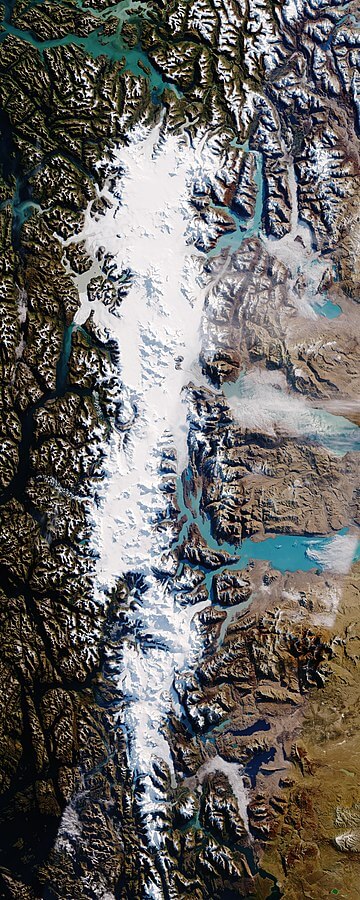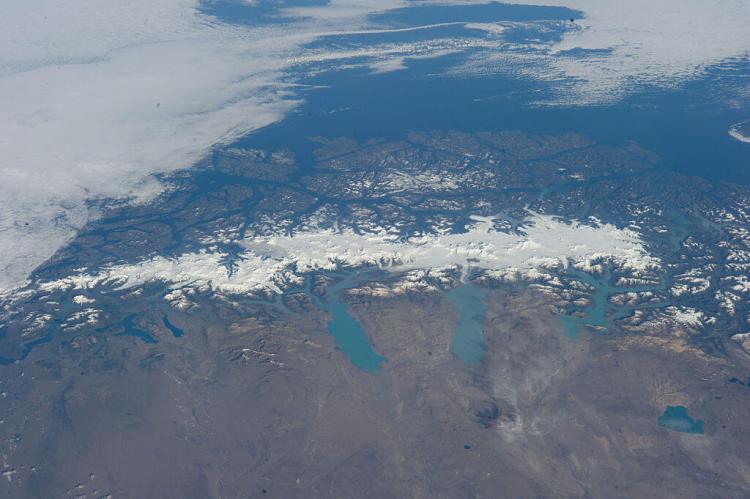The Southern Patagonian Ice Field: A Glacial Wonderland of Chilean and Argentine Patagonia
Stretching across Chile and Argentina, the Southern Patagonian Ice Field stands as an immense testament to the glacial history of this region. Holding the distinction of being the world's second-largest contiguous extrapolar ice field, it constitutes the more significant remnant of the Patagonian Ice Sheet.
The Southern Patagonian Ice Field
A Glacial Wonderland of Chilean and Argentine Patagonia
Nestled within the rugged expanse of the Patagonian Andes in Chile and Argentina, the Southern Patagonian Ice Field emerges as a colossal testament to the region's glacial history. As the world's second-largest contiguous extrapolar ice field, it represents the larger of the two remnants of the once-expansive Patagonian Ice Sheet.
Geological Origins and Glacial Legacy
The Southern Patagonian Ice Field is a remarkable geological entity situated in the southern reaches of the Patagonia region. It is the more significant remnant of the Patagonian Ice Sheet, which covered south Chile during the last glacial period, locally known as the Llanquihue glaciation. Comprising both northern and southern lobes, the modern ice fields, though diminished from their peak around 18,000 years ago, still rank as the southern hemisphere's largest expanse of ice outside Antarctica.
Glacial Dynamics and Rapid Change
This immense ice mass feeds numerous glaciers, including renowned ones like Upsala, Viedma, and Perito Moreno in Argentina and Pío XI Glacier, O'Higgins, Grey, and Tyndall in Chile. The glaciers flow west into the fjords of the Patagonian channels of the Pacific Ocean and east into the Patagonian lakes Viedma and Argentino. The meltwaters eventually make their way through the rivers de la Leona and Santa Cruz, reaching the Atlantic Ocean. However, the Southern Patagonian Ice Field is undergoing rapid change due to a high melting rate, emphasizing the vulnerability of these glacial landscapes.
Protected Areas and Environmental Significance
A significant portion of the Southern Patagonian Ice Field is protected within various national parks, including the Bernardo O'Higgins and Torres del Paine in Chile and the Los Glaciares in Argentina. These protected areas play a crucial role in preserving the pristine glacial environments, ensuring the continued existence of this natural wonder for future generations.
Volcanoes and Border Issues
Beneath the ice field lie two known volcanoes, Lautaro and Viedma, adding an intriguing geological dimension to this frozen landscape. However, their inaccessibility has limited research efforts, making them among the least studied volcanoes in Chile and Argentina.
An interesting geopolitical aspect of the Southern Patagonian Ice Field involves a 50-kilometer (30-mile) stretch of the Chile-Argentina border between Mount Fitz Roy and Cerro Murallón, which remains undefined on the ice field. This border section represents the last unresolved border issue between the two nations, highlighting the unique challenges the icy terrain poses.
Conclusion
The Southern Patagonian Ice Field's vast expanse of glaciers, dramatic fjords, and towering ice masses is a testament to the dynamic forces that have shaped the landscape over millennia. As climate change accelerates the melting of these glacial wonders, the need for conservation and international cooperation becomes increasingly evident.
The Southern Patagonian Ice Field not only encapsulates geological and environmental significance but also serves as a reminder of the delicate balance between human borders and the ever-changing forces of nature.

NASA satellite photo of the South Patagonia Ice Field
